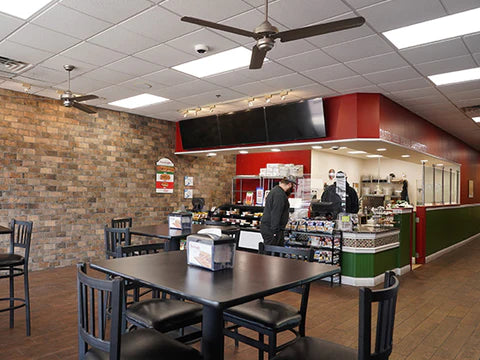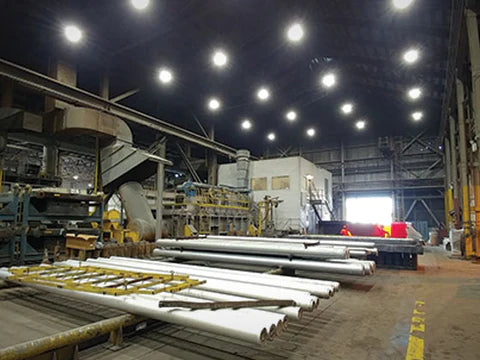Choosing the Right Mounting Height for High Bay LED Lights: A Complete Guide
Welcome to our guide on choosing the perfect mounting height for high bay LED lights! If you're looking to brighten up large spaces efficiently, you're in the right place. Whether you're illuminating a warehouse, gymnasium, or industrial facility, getting the mounting height just right is crucial for optimal lighting performance and energy savings. So, let’s shed some light on this important topic.
Understanding High Bay LED Lights
Before we delve into mounting heights, let's quickly recap what high bay LED lights are and why they're a top choice for large, open areas.
- Efficiency: LED high bay lights are renowned for their energy efficiency, making them the go-to choice for commercial and industrial lighting.
- Longevity: LED technology boasts a significantly longer lifespan compared to traditional lighting options, reducing maintenance costs and hassle.
- Brightness: High bay lights produce powerful illumination, ensuring even coverage and visibility across expansive spaces.
Now that we've covered the basics, let's explore the key factors that affect the optimal mounting height for your high bay LED lights.
Factors Influencing Mounting Height
Several factors come into play when deciding on the ideal mounting height:
- Ceiling Height: The distance from the floor to the ceiling serves as the foundation for determining the appropriate mounting height.
- Light Distribution: Understanding how light from your new high bay fixture disperses will help you achieve uniform illumination.
- Task Requirements: Different tasks may require varying levels of brightness and uniformity.
- Safety Regulations: Industry standards and local regulations could impact your mounting height options.
Determining the Optimal Mounting Height
Calculating the optimal mounting height involves considering various factors to achieve balanced illumination throughout the space. While there isn't a one-size-fits-all formula, here's a step-by-step approach:
- Assess Ceiling Height: Measure the distance from the floor to the ceiling (CH). This serves as a starting point for determining the mounting height.
- Evaluate Task Requirements: Determine the specific tasks performed in the illuminated space. Then, decide on the level of brightness and uniformity needed for the activities.
- Account for Safety Regulations: Ensure compliance with safety standards and regulations governing lighting installations in your industry. Factors such as emergency egress lighting requirements and minimum lighting levels for safety must be considered when determining mounting heights.
- Mockup and Adjust: Before finalizing the mounting height, consider creating a mockup or test installation to assess the actual lighting effect in the space. Make any adjustments needed to minimize shadows and/or glare.
- Consult with Experts: If you're uncertain about the optimal mounting height for your specific application, don't hesitate to consult with lighting experts or professionals. They can provide valuable insights and recommendations based on their expertise and experience.
With these steps completed, you'll be well-equipped to make informed decisions regarding the placement of high bay LED lights in your commercial or industrial facility!
Illuminate Your Space With Confidence
Selecting the right mounting height for your high bay LED lights is essential for optimizing visibility, energy efficiency, and safety in your commercial or industrial space. By understanding the factors influencing mounting height and considering the specific requirements of your environment, we hope you can now ensure optimal performance of your new lighting. If you would like help with a professional lighting layout, submit a lighting services request – we provide this service (and more) at no extra cost to our customers.

 215.355.7200
215.355.7200




